#Coquerel's sifakas
Text
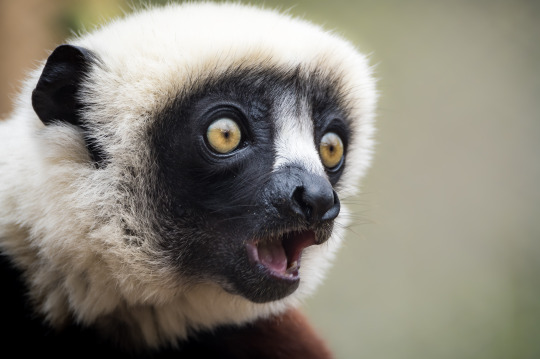
Oh no! Can you believe it’s Monday? If you’re feeling like Coquerel’s sifaka (Propithecus coquereli), you’re not alone. This primate inhabits deciduous forests in Madagascar, where it lives in groups of up to 10 individuals. It’s mainly arboreal, with leaves making up the majority of its diet. Its teeth are specialized for grinding plant matter. Its name comes from the “shif-auk” sound it makes when moving through the treetops.
Photo: Wade Tregaskis, CC BY-NC 2.0, flickr
#science#nature#natural history#animals#fact of the day#monday#cool animals#animal kingdom#coquerel's sifaka
255 notes
·
View notes
Text

Coquerel’s sifaka (Propithecus coquereli) in Madagascar. Razafitsalama plans to accelerate his community-based fire management programme to protect lemur habitat in a country that the UN said has experienced the world’s first climate change-induced famine
Photograph: Travis Steffens/2023 Whitley awards

Madagascar’s mongoose lemur (Eulemur mongoz)
#travis steffens#photographer#whitley awards#coquerel's sifaka#propithecus coquereli#madagascar#lemur#animal#mammal#wildlife#conservation#nature#madagascar's mongoose lemur#eulemur mongoz
62 notes
·
View notes
Text

A Coquerel's sifaka (Propithecus coquereli) leaps from a branch in Madagascar, Africa
by Laurence Green
#coquerel's sifaka#sifakas#lemurs#Propithecus coquereli#propithecus#indriidae#strepsirrhini#primates#mammalia#chordata#wildlife: madagascar#wildlife: africa#prosimians
61 notes
·
View notes
Text
Madagascar, Lemurs, OneHealth.......a Masters? 🏝️🐒🔭🎓(U9)
Hey friends, its been a while and I’m glad you’re here!
This weeks’ prompt encourages us to share something about nature that gets us excited and ooooooooooooooooh am I excited! Like I’ve mentioned before, I’m a 4th year zoology student which 1) means I know a lot of cool animal stuff (ask me questions!), and 2) it’s almost time for me to graduate!
So today I’d like to talk about my current Masters application and the really cool OneHealth conservation research I have done (and hope to do again) in Madagascar!

Over the summer I got the opportunity to take the One Health Approach to Conservation Field school where we were taught zoological, ecological, and anthropological approaches to conservation issues in Madagascar’s rainforest and unique dry deciduous forest within Ankarafantsika National Park (Picture a rainforest but take away the rain, the biggest animal is the same kind of lemur as Zoboomafoo, and also the soil is like sand!!). While I won’t go into too much detail about most of the field work we practiced, like tree identification, phrenology, and size measurements, participant-observation sessions in tree-planting, rice harvesting, and a local village classroom, and of course-tent living and consistent rice and beans eating, I willllllllllll go into detail about the lemurs, cause oh so much do I love those little guys.
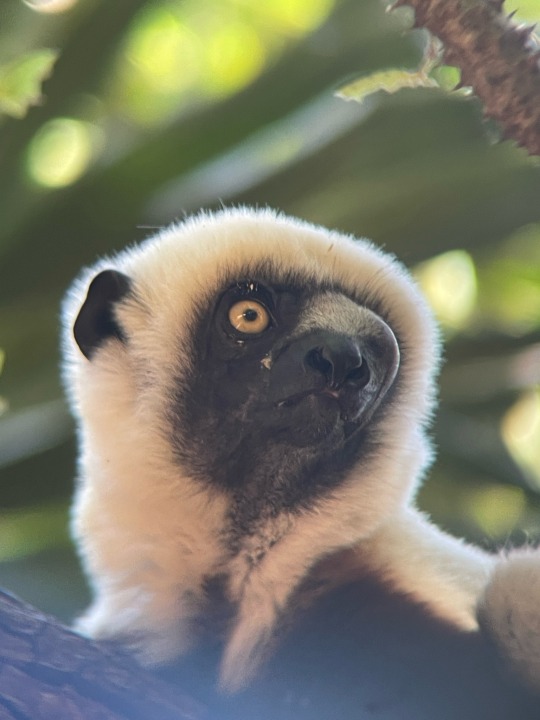



(1. Male with eye tumor/injury, 2. me with two mothers (if you look close you can see 2 baby heads!), 3. me taking leaf samples to make a dry-season Tree ID sketch, 4. my luxurious living quarters for the month.)
Our instructions were to do both focal and scan sampling, but my absolute favourite part of the trip was following the lemur groups and trying to identify the specific individuals while they were either chilling in our camp or being extremely chaotic in the forest.
During these observations, not once but twice did I witness 2 separate groups have lemurs literally try to kill an individual from the other group... and so when asking about this to my professor, the general conclusion we came to after he told me he’s never seen such violence despite coming to the park for years, was that the increased forest fragmentation (deforestation making the forest into sections rather than one continuous space) might be forcing groups that should be far apart into sharing the same spaces, causing fights for space, food, etc.
This species of lemur (Coquerel’s sifaka) is critically endangered and is a huge sense of pride for the indigenous people of Madagascar. Many of the parks residents follow taboos that forbid lemur hunting and consumption to protect these creatures. Unfortunately, its possible that either the past or current farming practices of some of them are negatively affecting lemurs, potentially without realizing. Not only does this become an anthropological issue, but if true, is a logistical problem best answered with knowledge of the lemurs behaviour, spatial and abundance knowledge on the plants used for food and shelter by both lemurs and people, and of course interviewing, participating in, and potentially educating and being educated by the residents to get a proper understanding of how to tackle this problem.
And so that’s the general gist of what I’ll be diving deeper into for my Masters, wish me luck!
[My friends video of one of the violent interactions (I know it looks like they are hugging but they have giant teeth with a strong bite force, are the size of toddlers, and it didn't give up until it thought the other was practically dead), the lemur that didn't run away was left with a bleeding head and injured arm but we think she survived!]
#Madagascar#Ankarafantsika National Park#OneHealth#Zoology#Ecology#Anthropology#Sifaka#Coquerels sifaka#lemurs#field work#conservation#envs 3000#science communication#behaviour research
12 notes
·
View notes
Text
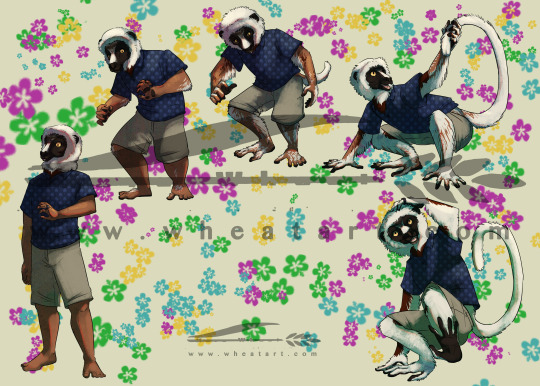
Part 2 for MysteryEzekude on FA
Did you know lemur proportions are pretty close to our own? That's why they do their sideways hop, because their arms are too short to go on all fours!
Commission Info: https://wheatart.com/about
7 notes
·
View notes
Text
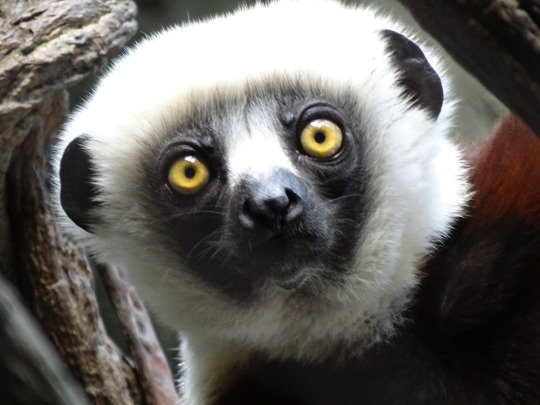

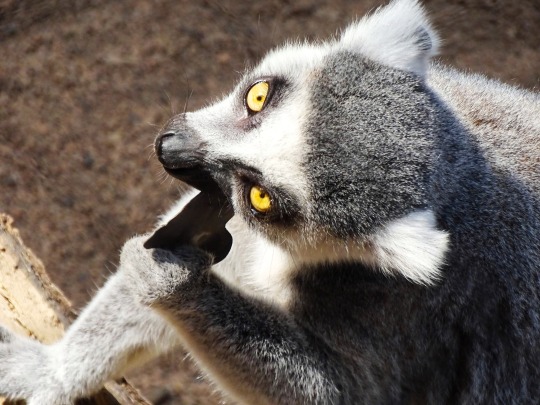
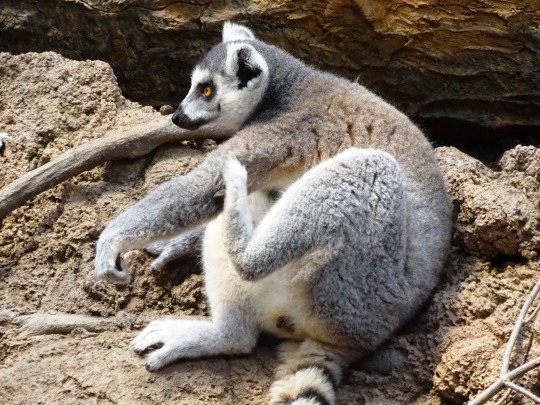
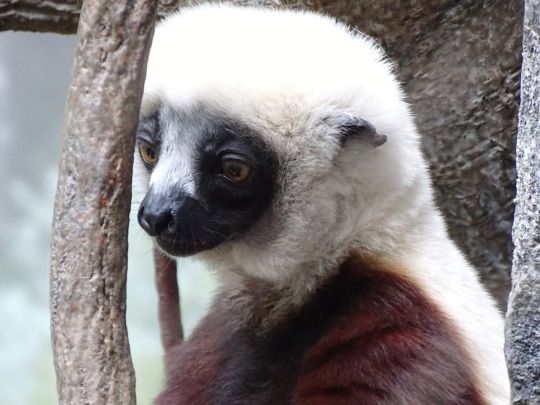



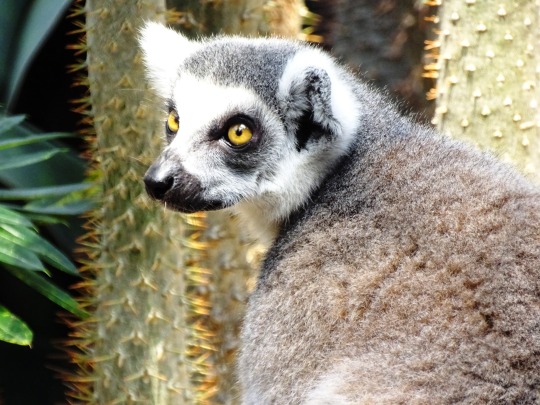
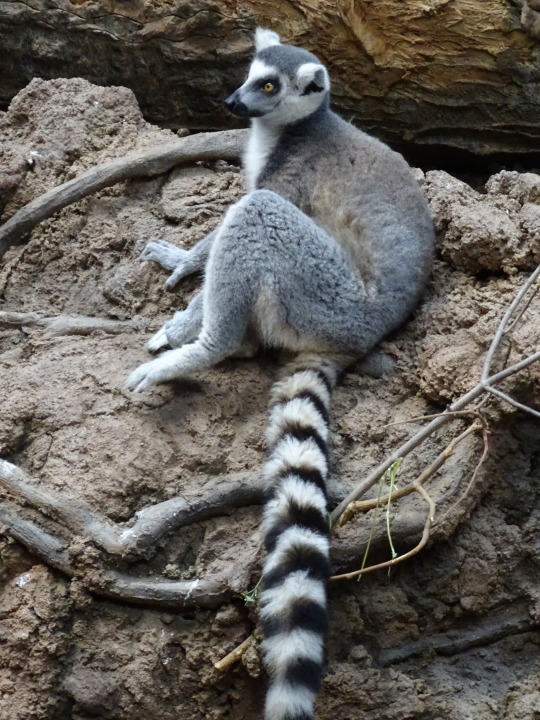
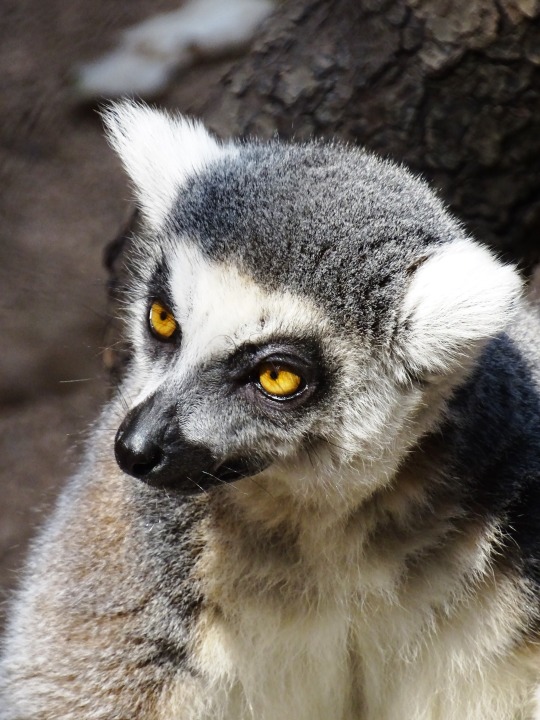
World Lemur Day
World Lemur Day celebrates lemurs and spreads the word about the need to conserve them; it inspires a love for them and actions to save them from extinction. It also celebrates Madagascar, the island nation located 250 miles off the east coast of Africa that lemurs call home. Events are held around the world on the day, in person and virtually. World Lemur Day takes place on the last Friday of October, and the World Lemur Festival takes place during the weeks surrounding it.
Madagascar is rich in biodiversity, and much of its flora and fauna can be found nowhere else in the world, as is the case with lemurs. Scientists believe that lemurs may have gotten their start on Africa's mainland before arriving; they think lemurs floated to the island on vegetation, and then evolved and diversified over millions of years. Madagascar was a favorable environment for them because the landscape was habitable, there were varied food sources, and there weren't any large predators.
Today there are over 100 species of lemurs. By one count there are 112, but the number changes when new ones are identified through discoveries and genetic testing. Subfossils indicate there once were more and that some became extinct, possibly from being hunted by humans after humans arrived on the island. The 2020 update of the IUCN Red List of Threatened Species indicated that almost all lemur species were threatened with extinction and that almost a third were critically endangered.
The smallest lemur is the Madame's Berthe mouse lemur, weighing in at 30 grams, and the largest is the indri, which may weigh up to 9.5 kilograms. Subfossils indicate that some lemurs were once as large as gorillas. Some other lemurs are the ring-tailed lemur, dancing sifaka, and aye-aye. Lemurs have unique traits in common. They have a heightened sense of smell because of their long snouts and wet noses and have improved night vision because of their tapetum lucidum, an extra layer of tissue behind their retina. All lemurs except aye-ayes have incisors and canines that lean forward instead of upward, called toothcombs, which are used for grooming, as well as to eat seeds and bark.
The forests of Madagascar benefit from lemurs, who help them grow by pollinating plants and dispersing seeds. Lemurs eat fruit but don't digest the seeds, and leave the seeds around the forest in their droppings. They also may get seeds and pollen stuck in their fur while looking for fruits and nectar, and may pass them onto other flowers.
To protect lemurs, the challenges and threats they face must be known. They face habitat change and loss, climate change, invasive species, and poaching. The forests of Madagascar are decreasing in size, changing the habitats of lemurs. This negatively impacts individual lemurs and the species as a whole. Madagascar is one of the top countries affected by climate change caused by humans. Droughts in the south and yearly monsoons in the north have become more prevalent in the twenty-first century, affecting all life on the island, including lemurs. Being that Madagascar developed in isolation when non-native species enter the ecosystem, they can threaten those that live there. Lemurs are also hunted for the pet trade, for food, and for cultural reasons.
A "fady" is a taboo of the Malagasy people, those who reside in Madagascar. For some, hunting, killing, or eating the indri is fady, since legend says that the spirits of ancestors live on within them. The aye-aye is associated with evil, and legend says that bad things may happen to those who see one. They are often killed because of this.
Lemurs benefit from ecotourism. Those visiting Madagascar bring money to the local economy, and, in turn, the Malagasy see the benefit of having the lemurs around—tourism wouldn't thrive without them. As the economy grows, the lemurs benefit. Conservation work in Madagascar is complex and supports wildlife, habitats, and people. Building relationships with and working with the Malagasy is crucial. Establishing and maintaining protected areas, reforestation efforts, dealing with invasive species, captive breeding at zoos, and reintroducing and relocating species are all part of conservation efforts. These efforts are given a boost today with World Lemur Day!
How to Observe World Lemur Day
World Lemur Day is celebrated individually, but also by zoos and other organizations. Some ideas for participation include:
Post on social media with the hashtag #WorldLemurDay and tag the Lemur Conservation Network. They can be found on Facebook, Twitter, and Instagram. Focus your posts on the urgency of lemur conservation and how everyone can help make a difference and save lemurs from extinction by working together. Use the social media guide to help you craft your posts.
Utilize the Lemur Conservation Network's participation guide for ideas on how individuals, member organizations, zoos, educators, and libraries can participate. For individuals, they suggest holding a fundraiser for a Lemur Conservation Network's member organization; sharing photos of lemurs seen at zoos or during travel to Madagascar, along with information about them, what is loved about them, and memories of the trip; creating and sharing information graphics about lemurs; holding a community event, such as a lemur-themed happy hour, film screening, or costume party; visiting a school to teach kids about lemurs; or walking around in a lemur costume.
Plan your own event. Consider collaborating with a Lemur Conservation Network member organization to create one. Send details about your activity or event to the Lemur Conservation Network for them to add to their event calendar, and check the calendar for other events to attend.
Join the Lemur Conservation Network.
Volunteer with the Lemur Conservation Network or with an organization in Madagascar that protects lemurs.
Read a book about Madagascar.
Listen to a podcast about lemurs or Madagascar.
If you are a teacher, you could use the Lemur Conservation Network's teaching resources for your classroom.
Check out the Lemur Conservation Network's "Professional Resources for Research and Conservation."
Check for other ideas on the Lemur Conservation Network's "How to Help" page.
The Lemur Conservation Network suggests contacting them to learn more about participating in the day.
Source
#Coquerel's sifaka#Ring-tailed lemur#Red-ruffed Lemur#Lemur catta#USA#World Lemur Day#WorldLemurDay#last Friday in October#27 October 2023#Madagascar!#Bronx Zoo#New York City#original photography#travel#vacation#summer 2019#2018#tourist attraction#indoors#animal#international day#close up#details#the Bronx
4 notes
·
View notes
Text
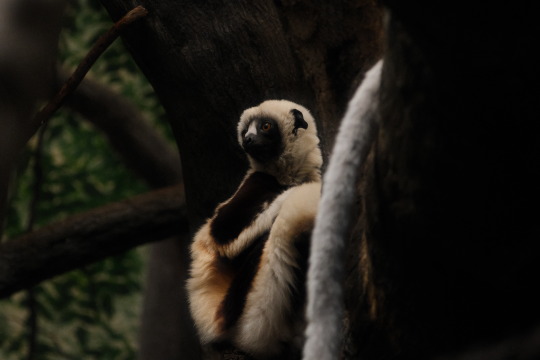
#fujifilm#fujifilm xs10#fuji xs10#digital photography#photography#film emulation#nostalgic negative emulation#Coquerel's sifaka#lemur#zoo#fujixs10#fujifilmxs10
5 notes
·
View notes
Video
Coquerel's Sifaka, Saint Louis Zoo 8/8/23 by Sharon Mollerus
0 notes
Text
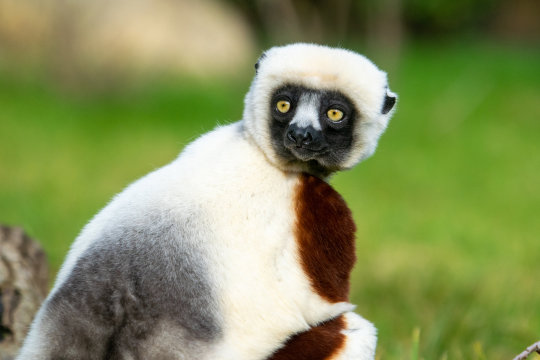
Coquerel's Sifaka (Propithecus coquereli)
@ hjkr
0 notes
Text
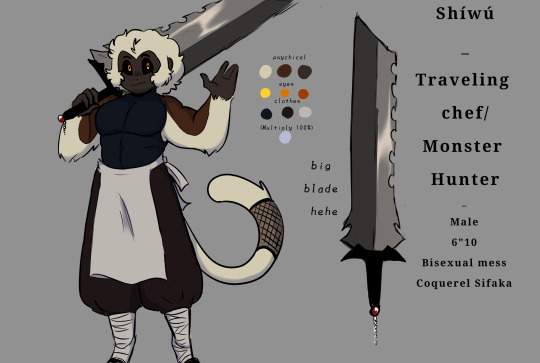

SHÍWÚ the Coquerel Sifaka
Born and raised in Madagascar but soon transferred to China due to a shortage of beast hunters in that country, being taught as a beast hunter for 20 years he's up in the top ranks of qualified hunters. However, this hunter..he's got an adventurous appetite and cooks his bounties.
He has an insane amount of strength where he can carry up to 600k tons due to the amount of beasts that weigh more than a T-Rex.

#lmk#lego monkie kid#lmk oc#lmk ocs#lmk oc art#lego monkie kid oc#monkie kid oc#oc art#oc#oc stuff#lmk fanart
204 notes
·
View notes
Text
Made a Nomai OC cause why not
Meet Cedar : )
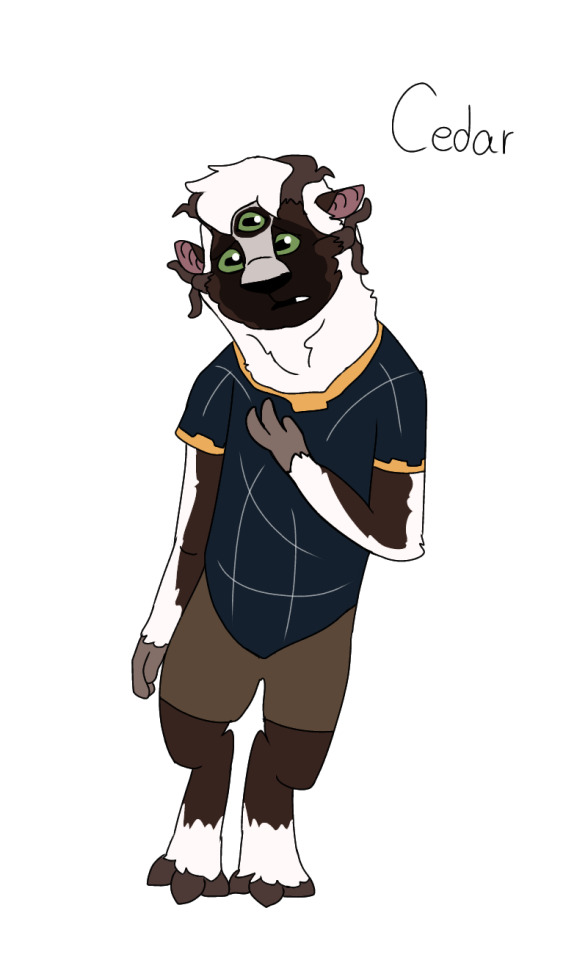
-His peculiar coloration is the fact that his origins are from a different clan, since in my headcanon Nomai might sometimes exchange small parts of the population during the festivals
-But the meta reason is that the colors are based on a Coquerel's Sifaka lol
-Cedar's a second generation Nomai, born on Brittle Hollow several years after the clan got stranded
-He was very interested in preserving Nomai customs and traditions, so he did his best to impart whatever knowledge he was taught to the younger generation
-Cedar had always wanted to attend a festival himself, let alone meet another clan. So for a large part of his life, he worked on trying to build a long range communicator to try and establish contact with the other Nomai clans, hoping that someone out there would listen
-Unfortunately, Cedar didn't manage to finish his work due to the Interloper's untimely arrival : (
22 notes
·
View notes
Note
[takes you to the carnival, and wins you a giant stuffed animal of your choice]
Get me a stuffed meerkat, capybara, or coquerels sifaka and I'll be one happy babygirl and I'll even do some flips for you
18 notes
·
View notes
Video
eye contact by Werner Krause
Via Flickr:
Augenkontakt
#(c)www.wernerkrause.eu#2022#(c) Werner Krause Pulheim#Augenkontakt#eye#contact#Coquerel-Sifaka#Lemur#lemure#Lemuren#Tier#Tiere#Animal#Animals#flickr#werner krause#french photographer#mammal#wildlife#nature
17 notes
·
View notes
Text

A Coquerel's sifaka (Propithecus coquereli) pulls fruit from trees in Madagascar
by Laurence Green
#coquerel's sifaka#sifakas#lemurs#propithecus coquereli#propithecus#indriidae#Strepsirrhini#primates#mammalia#chordata#wildlife: madagascar#wildlife: africa
63 notes
·
View notes
Text
I'm gonna say something maybe controversial but Momo looked better in the 2010 film than the new live action show.

like not by a lot, but basing him around real coquerel's sifakas and ring-tailed lemurs made him feel way more grounded. 2024 Momo is inching a little too close to uncanny valley/obviously CGI territory. I think they tried too hard to keep him cartoon accurate and it kinda backfired.
#they could have just used a real juvenile sifaka and cg'd the wings and ears on later tbh#jovian (you know him as zoboomafoo) has grandkids that might have been options#would have worked#natla
3 notes
·
View notes
Text
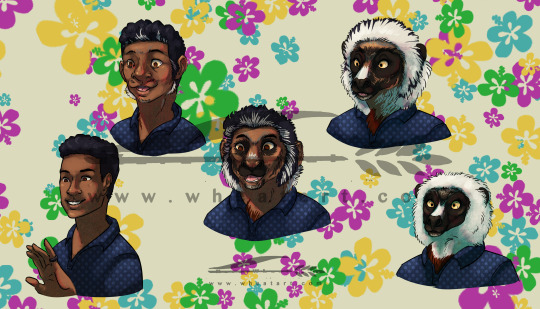
Commission for MysteryEzekude on FA
"Everything is improved by the judicious application of primates."
Chris Roberson
I'm pretty sure I first discovered this lemur through Zoboomafoo. I LOVED that show!
Commission Info: https://wheatart.com/about
7 notes
·
View notes
